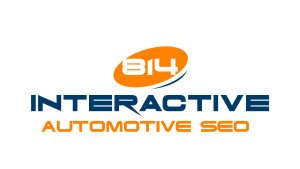Search engine optimization is not as complicated as it is often made out to be.
The basics of SEO are actually fairly simple and can be easily implemented by someone who has the time and the skills to do so.
That said, there are some aspects of SEO that those who are new to the strategy might not know.
Here are ten facts about automotive SEO that you might not know:
1. About a quarter of automotive SEO actually takes place off-page.
There is so much discussion about which keywords to use, when to use them, and how to use them, that we often forget that there is a large portion of search engine optimization that actually takes place away from the webpage we are trying to optimize.
Seventy-five percent of SEO has to do with keyword and page load speed and meta data.
The other quarter has to do with link building, which is why it is so important to be constantly building links.
2. Page titles are almost as important as the content itself.
If the content is the number one most important aspect of automotive SEO, page titles are the next most important factor.
This is how the search engine will determine whether or not your page is actually relevant to the search query.
This is why it is so important to include a keyword in your page title, as long, of course, as it actually fits naturally in that title. Make sure your page titles are targeted, so that potential customers will respond to them.
3. Your meta description is the third most important factor.
It is ultimately your meta description and the title that convinces someone to click on your link in organic search results.
Your meta description is that little block of text underneath your link.
It should tell searchers what they can expect to find when they click in to your website.
This description should be less than 150 characters, should include a keyword, and should be informative, relevant, and attractive for searchers.
4. The first five links get ¾ of all traffic.
The first page of Google in general gets 91% of all search traffic.
The first five links (generally the ones “above the fold” of the page) get 75% of that traffic.
This can be discouraging for those that are link six or beyond, but it should be motivating.
As you work on your strategy, look for keywords that you can effectively optimize for that will allow you to be one of those first five links.
Keep in mind that optimizing for too many keywords at once will spread your efforts thin and make it impossible to rank well for any particular keyword.
5. Social media heavily influences automotive SEO.
Google is not just taking into account your Google+ account—they are boosting rankings for dealerships with a good Facebook or Twitter following, too.
Social is only becoming more and more important in the algorithm. If you do not have active profiles, it can be very difficult to get one of those top search spots.
It is particularly important to have a Google+ listing when you are trying to rank on Google, but other social media are nearly as important.
6. Having a site map really does improve your ranking.
A site map may seem fairly useless these days, especially considering most searchers come to your website for a specific page and not necessarily to explore.
That said, a site map helps Google quickly understand and index your site and gives your bonus points for making your website easy to explore if someone does want to investigate it thoroughly.
Large websites, especially, can make use of a site map.
If you include a separate page for every car on your lot, don’t forget to include a site map.
7. Proofreading is integral to SEO.
Little grammar and spelling mistakes will occasionally slip past you.
They should not be so egregious, however, that they make reading your content difficult.
If the content has so many mistakes that it is no longer easy to read, Google will pick up on this and will brand your page as low-quality.
Search engines associate poorly written and edited content with low-quality and scam websites.
Unless you want your dealership’s website lumped into that category, you will want to carefully proofread everything.
8. Mobile search is now more popular than desktop search.
Before the age of the smartphone, there was only desktop search.
The proliferation of the smartphone means that more and more people are using these devices, instead of their desktops, to search for businesses.
What does this mean for you?
It means that if your website is not optimized for mobile search, it may not show up in any search results, no matter how well your website is otherwise optimized.
9. Code is as important as content.
Messy, ineffective code will not just slow down your website—it will also ruin your search engine optimization efforts.
Your dealership will probably need a customized website that gives you the capability to quickly change vehicle listings, but make sure that that customized website is designed by someone with the skills to code it very cleanly.
10. 93% of all internet users start with a search query.
This means that the vast majority of people who log on to the internet do it to search for something, not to go directly to a certain website.
This is huge number of people that you could be reaching out to if your website was search engine optimized.




